The Canal du Vosges has been a challenge with numerous spots where the canal banks had caved in, many tight twists and turns, and in some places the trees had grown so far over the canal there was hardly any place to pass. Now I understand why the VNF employee hadn’t seen a full size barge like Rabelo in two years while working on the Vosges. With all those issues I still wanted to return, as the canal was so beautiful along with the spectacular countryside. I may be having second thoughts. On one section of the canal things got a little too challenging.
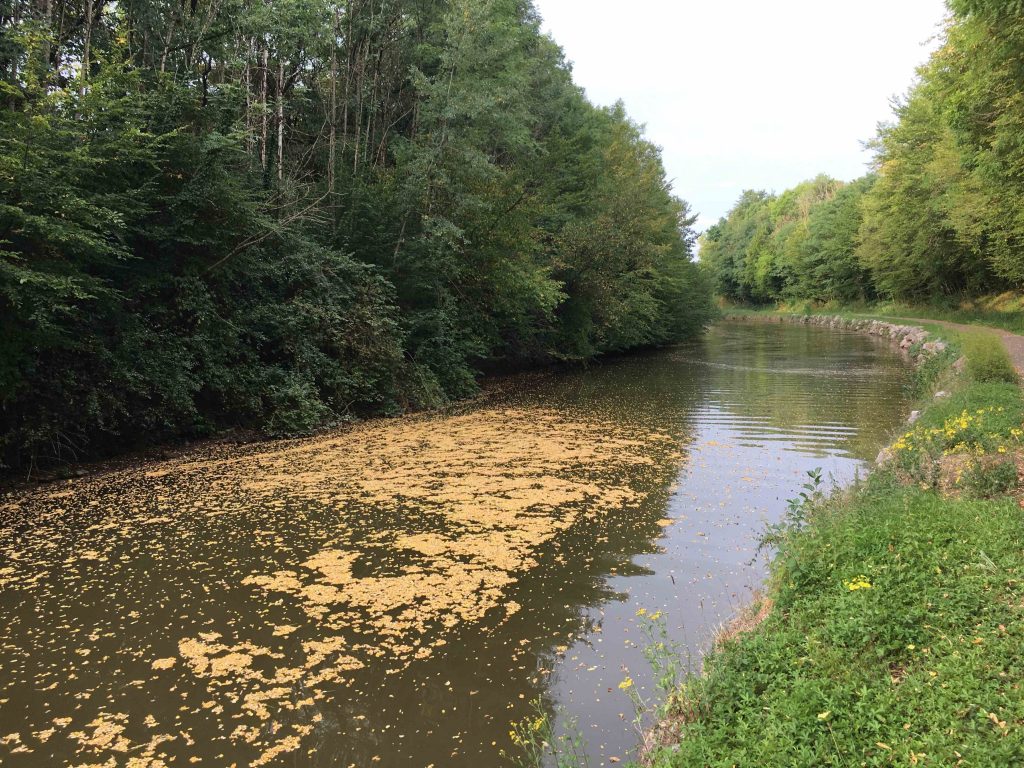
We’re starting to get some Fall colors. If we are lucky there will be spots where the entire canal is covered with leaves.
It’s hard to believe, but this is our sixth season on Rabelo. Up until recently, after transiting roughly 2,000 locks, we had only been stuck inside a lock once. That was on the Burgundy Canal. It was something we never expected because the charts said the locks were 5.20 meters wide (17ft. 1/2in.) and Rabelo is 5.09 meters wide (16ft. 81/2 in.). That left us an extra four inches, which should have been plenty of room. Remember we’ve been on canals where the advertised width of the locks were 5.10 (16ft. 9in.) and 5.05 (16ft. 61/2 in.) meters wide, and never had a problem. Like the Burgundy Canal the charts for the Vosges said the locks were a minimum of 5.20 meters wide. The Vosges has over 90 locks, and we had already been through well over half of them without a problem. For some unknown reason on just one section of the canal we got stuck in six different locks. Admittedly our big baby is a little broad in the beam, too much junk in the trunk, or maybe we’ve stuffed her with one to many baguettes, but her extra width has rarely been a problem.
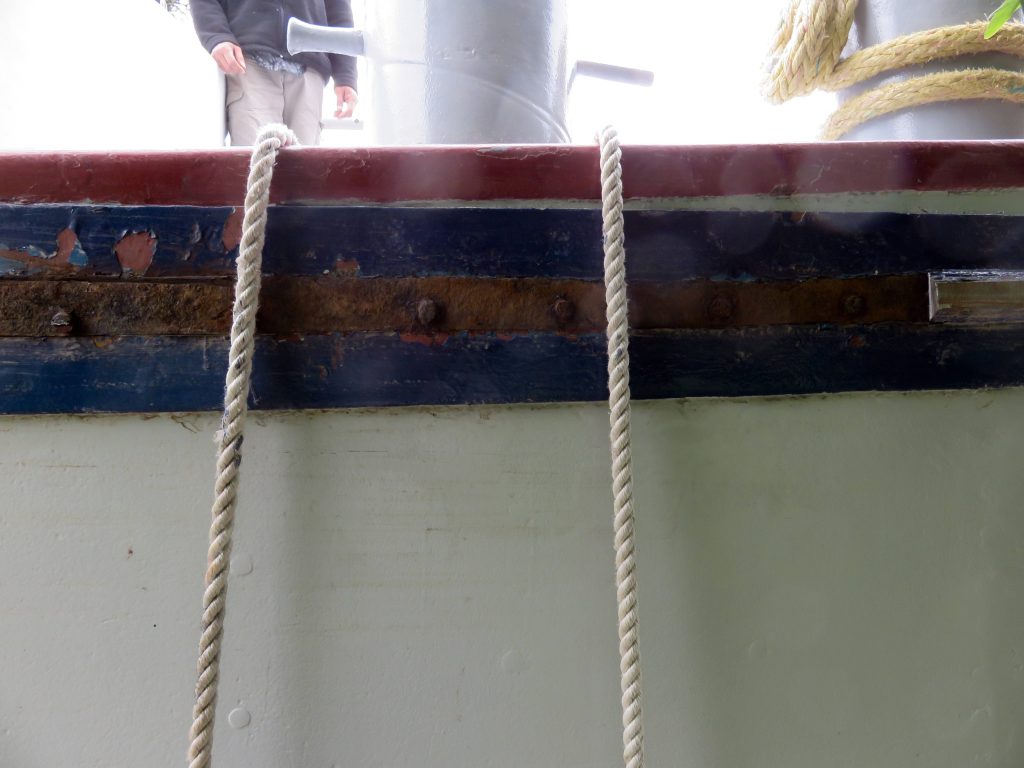
You can see where we cut the rub rail. When we are done Rabelo will be about 15mm narrower, or just over a half inch.

We couldn’t finish the job at this mooring because the guy in the house next to Rabelo complained so much about the noise we were making.
Back on the Burgundy Canal when we first got stuck, fortunately we had our old captain Kevin with us. Apparently he had had the same problem in the past, and knew exactly what to do. The trick to getting through a lock that is too narrow, is to wiggle. You give the engine lots of power, and then move the rudder from side to side. You keep on doing this, and despite moving forward as little as a half inch with each cycle most of the time you eventually get through. It also helps if the lock keeper will raise the water in the lock by opening the inlet gates a little.
We were locking down meaning we would enter a lock that was full. Once the gates were closed they would let the water out of the lock and we would drop down roughly ten feet. You can imagine how sickening it feels when you place the engine in forward, and begin to move only to come to a complete stop even though the engine is still running. When it happened on the Vosges I knew exactly what to do. The first lock we were stuck in took about a half hour to get out of. The next five locks took anywhere from five minutes to a half hour. When we were stuck on the Burgundy Canal it took an hour and a half to get free, so maybe we should consider ourselves lucky.
– Tom Miller
Author of “The Wave” and “When Stones Speak”– Chuck Palmer Adventure novels
OCT

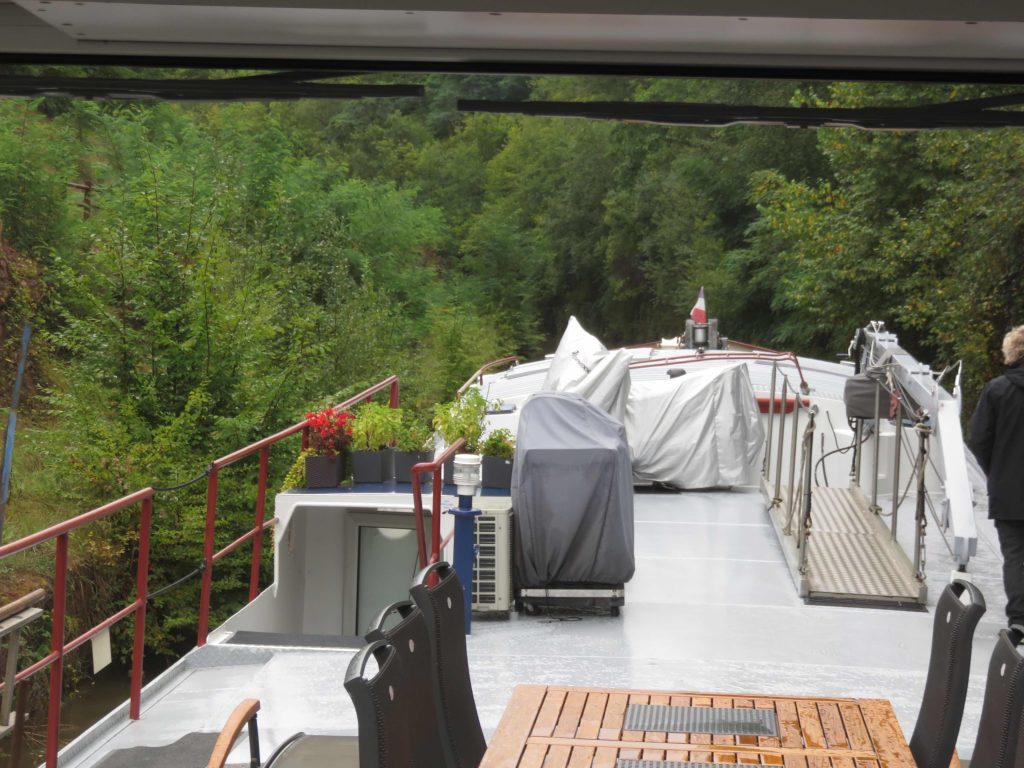

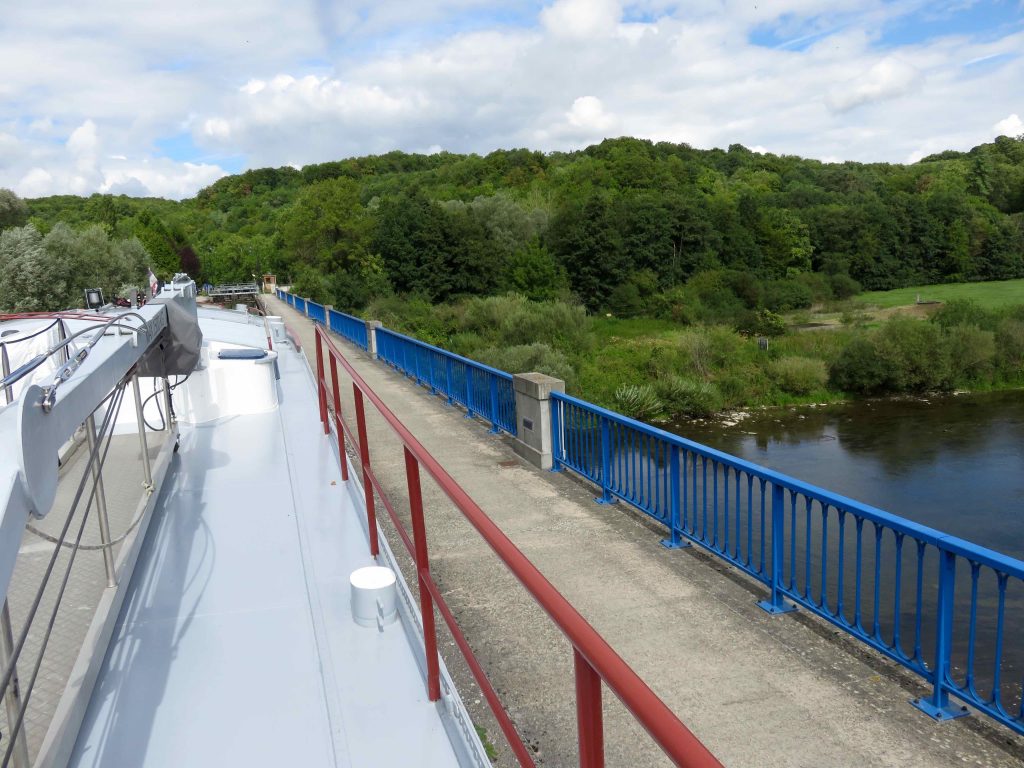
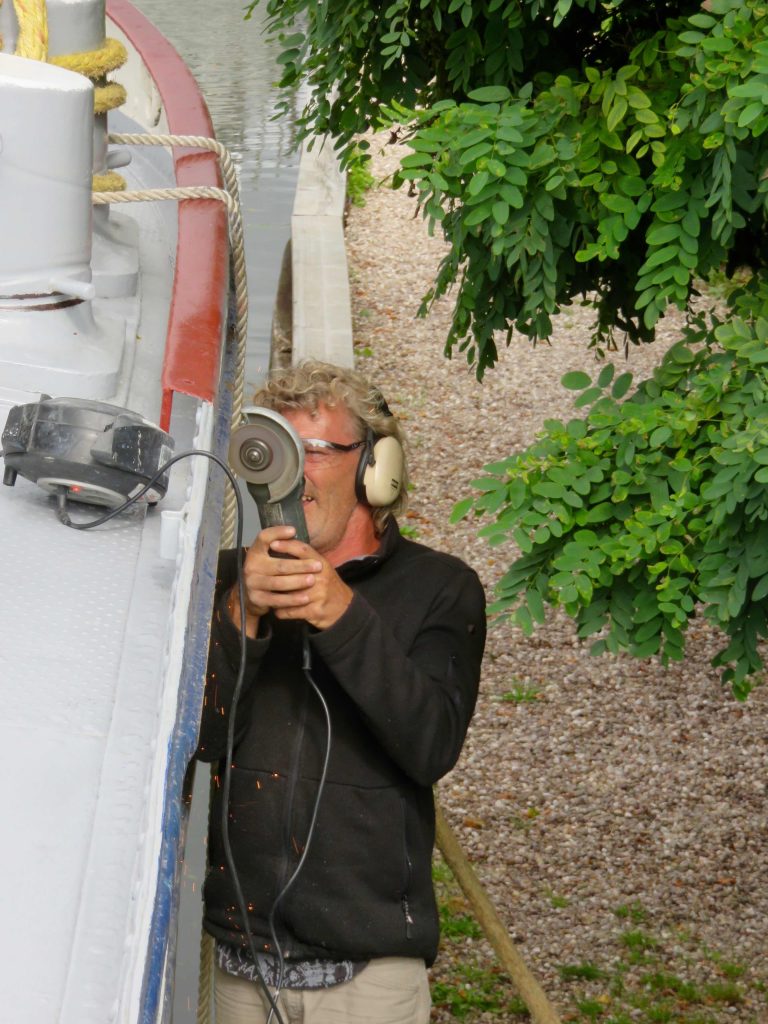

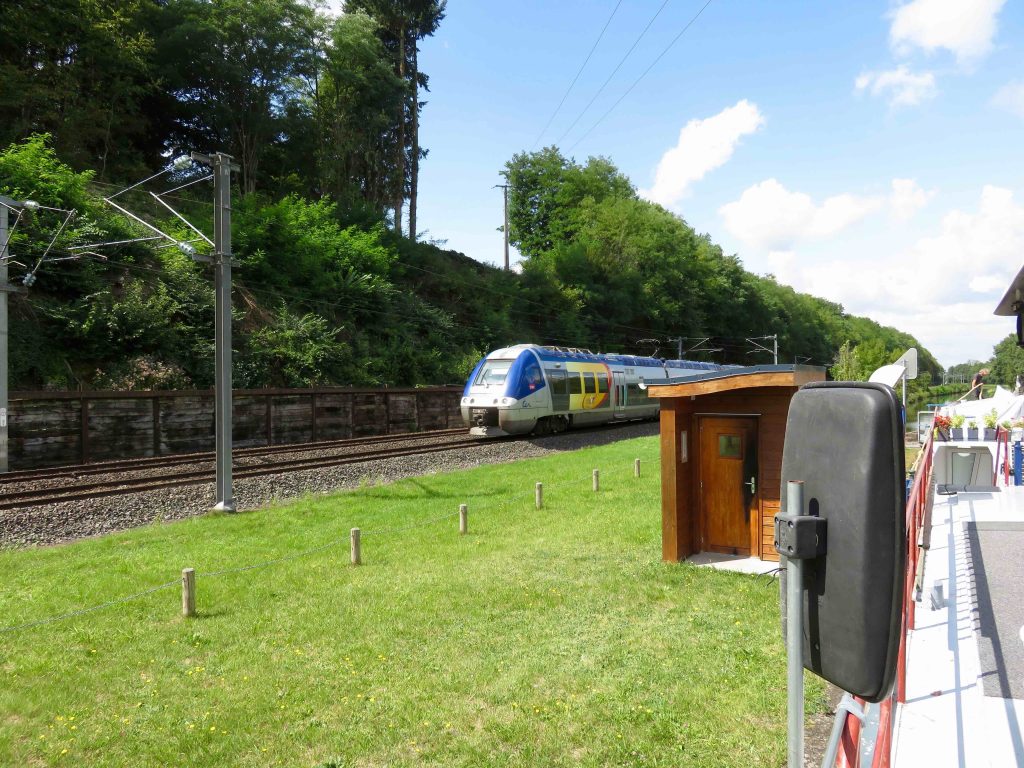

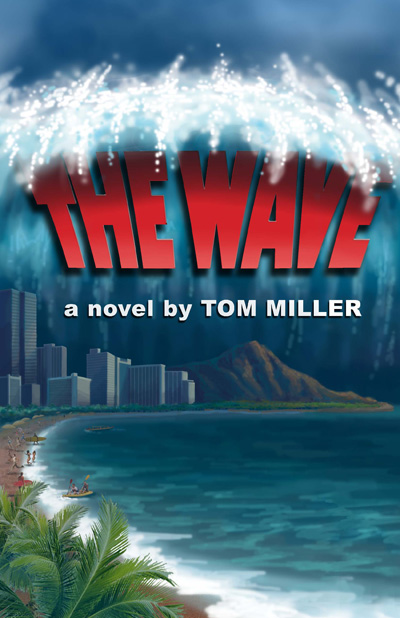
About the Author:
Tom Miller graduated from the University of Southern California with a Bachelor of Science in Geology. He is a consummate adventurer with over 1,000 dives as a recreational scuba diver, and an avid sailor who has traveled 65,000 miles throughout the Pacific including the Hawaiian Islands. Miller has also cruised the canals of Europe on his canal barge and given numerous lectures on cruising the canals of Europe, as well as sailing in the South Pacific. Piloting is also an interest of Miller's, and He has completed over 1,000 hours flying everything from small Cessnas to Lear jets.